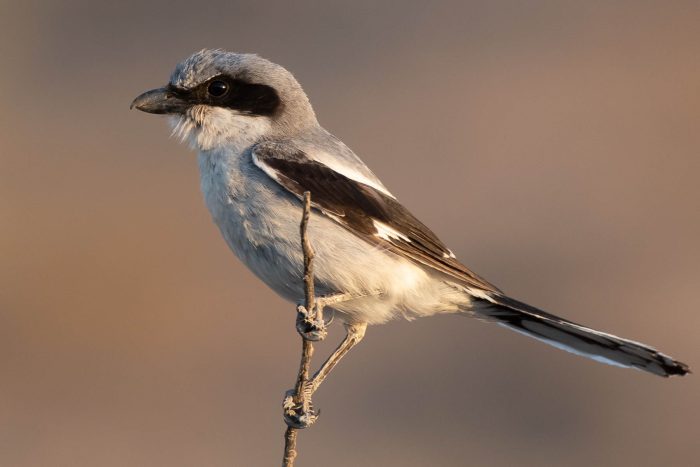Loggerhead Shrike
Lanius ludovicianus
Loggerhead shrikes are songbirds known with raptor-like behaviors
This section shows one large critter image at a time. Use the thumbnails that follow to select a specific image to display here.

This gallery contains a grid of small thumbnails. Selecting a thumbnail will change the main image in the preceding section.
Appearance
Loggerhead shrikes are gray with a black mask, white throat and a black, hooked beak. Its wings are black with flashes of white and its tail is black with white corners. Loggerhead shrikes are thick-bodied birds that are around 8 inches long.
Feeding
Loggerhead shrikes are formidable hunters of small birds, rodents and insects. They have a powerful, hooked bill and a notch near the tip of their beak that helps them snap the necks of their prey. The birds scans for its prey while sitting on low, exposed perches, and will often take their prey by surprise from behind. They are known for impaling larger prey on thorns or barbed wire to eat later.
Predators
Larger birds such as magpies and crows are predators of loggerhead shrikes. Snakes will also attack them and will eat their eggs. Domestic cats also kill billions of songbirds every year, including shrike.
Flight
Loggerhead shrikes tend to hover and use bursts of very rapid wingbeats.
Voice
The loggerhead shrike’s song is a series of harsh, two-note phrases repeated rhythmically. Their calls are grating noises that can be heard at a distance.
Reproduction and life cycle
Loggerhead shrikes begin breeding toward the end of March and into April, and lay their eggs during April to May. Females incubate a clutch of four to six eggs in their nest that will hatch after about 16 days. Chicks fledge (develop wing feathers large enough to fly) for around 16 days and then leave the nest. During the fall, loggerhead shrikes migrate to warmer climates, though some with overwinter in the Chesapeake area.
Did you know?
- Loggerhead shrikes have been referred to as “butcher birds” because they impale prey on sharp objects.
- Went hunting, loggerhead shrikes make up for their weak talons by surprising their prey from behind.
- Shrikes are passerines or “perching birds,” a group that includes many familiar backyard birds.
Sources and additional information
- Loggerhead Shrike – Pennsylvania Game Commission
- All About Birds – The Cornell Lab of Ornithology
